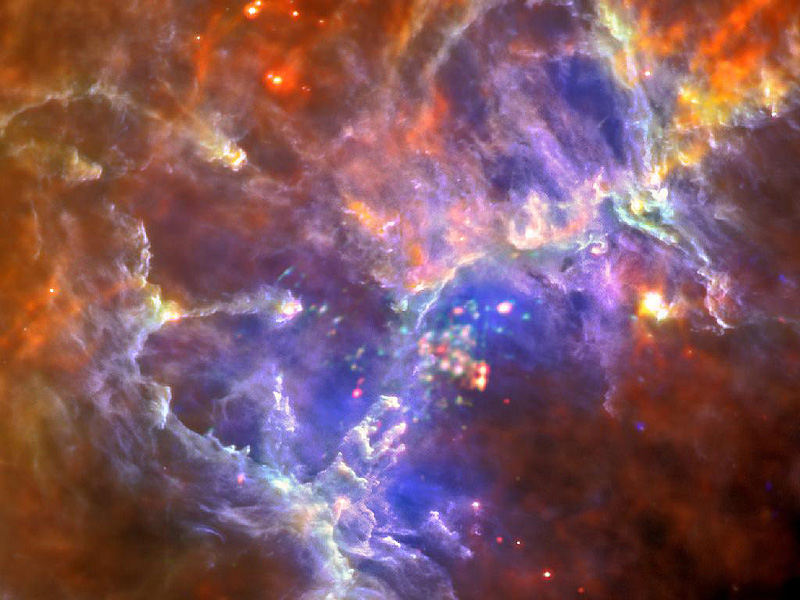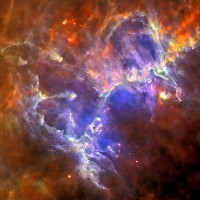This view of the Eagle nebula combines data from almost opposite ends of the electromagnetic spectrum. Herschel captured longer-wavelength, or far, infrared light, and the space telescope XMM-Newton imaged X-rays.
Home This view of the Eagle nebula combines data from almost opposite ends of the electromagnetic spectrum. Herschel captured longer-wavelength, or far, infrared light, and the space telescope XMM-Newton imaged X-rays. This view of the Eagle nebula combines data from almost opposite ends of the electromagnetic spectrum. Herschel captured longer-wavelength, or far, infrared light, and the space telescope XMM-Newton imaged X-rays.



